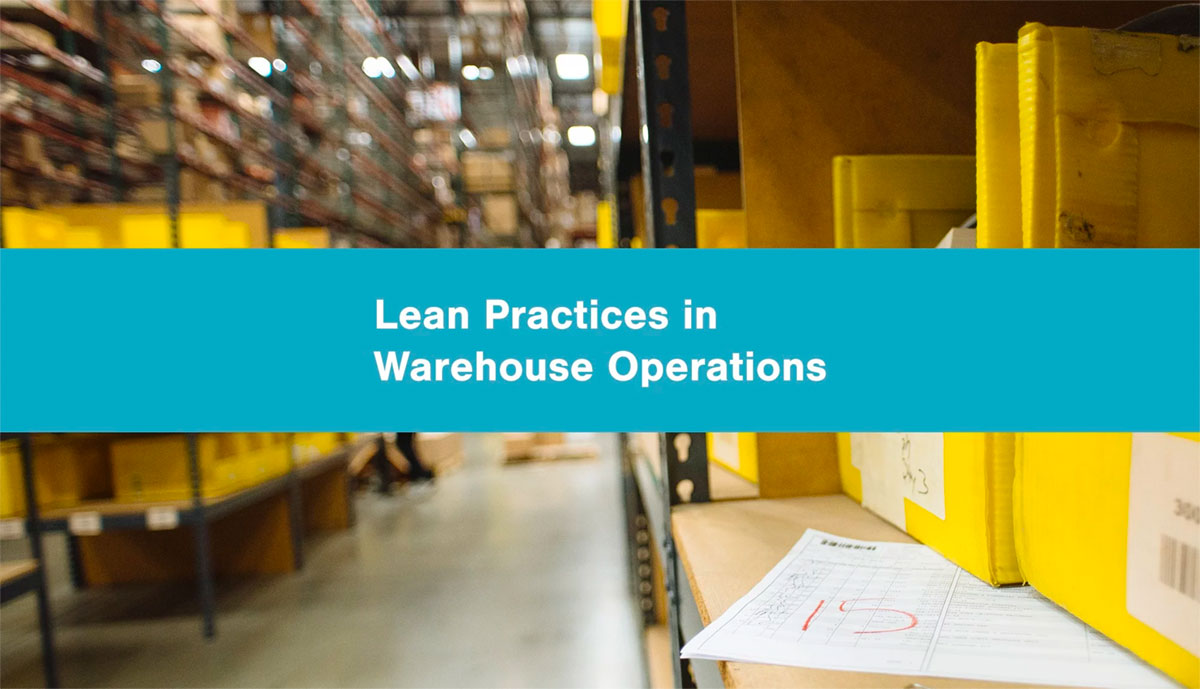Lean Warehouse Management Practices

Changes in manufacturing practices and increasing globalization are creating new challenges for warehouse management and logistics. Companies can no longer tolerate backorder situations, nor can they allow stock to sit on shelves waiting for an order to occur. Most managers understand the need to operate efficiently, but they are also looking for ways to reduce cost.
One popular approach to efficiency revolves around adopting “Lean” principles to the the warehouse. At its core, Lean is an approach that focuses on creating the most value for customers with the fewest resources. Lean organizations are constantly honing their tools and processes to continuously make improvements and reduce warehouse waste. Literature on Lean identifies seven key areas of warehouse waste and make recommendations for their improvement: Transportation, Inventory, Movement, Waiting, Overprocessing, Defects, and Space.
Lean principles and practices have had a huge influence on the manufacturing sector over the last few decades, but improvements have not always trickled down to warehouse operations. The problem: Implementing Lean in a warehouse or distribution center differs in many ways from implementing in a manufacturing plant. Even though the Lean principles are the same everywhere, employing them in a warehouse environment requires a more specialized approach.
Knowing the areas of warehouse waste, however, can help pinpoint several ways that warehousing and logistics operations can be improved for creating lean warehouse practices.
7 Critical Lean Wastes in a Warehouse and How to Minimize Warehouse Waste!
- Transportation and Conveyance: People or items need to move over longer distances than necessary, creating delays and added cost. This can be minimized with practices that optimize warehouse layout. For example, items that are frequently purchased together can be moved closer to each other, and fast selling items can be placed where they will be easiest for your staff to reach.
- Inventory: Inaccurate information about warehouse inventory levels creates problems, such as stock being unavailable for sales or shipping, which in turn leads to backorders. Managers all too readily overcompensate, creating excess inventory that does not move and takes up valuable warehouse space. This can be minimized by deploying warehouse management software that integrates with key systems and provides real time data with alerts to head off such situations.
- Movement: Unnecessary movements lead to worker strain and possibly accidents, which invites worker’s compensation claims. These extra movements arise from inefficient layouts, complex manual picking operations, and absent ergonomic workstations. This can be minimized by paying attention to packing procedures and deploying efficient, ergonomic layouts.
- Time (Waiting): Inefficient processes lead to bottlenecks, which in turn lead to time wasted. For example, workers might wait for shipping approvals, data updates, or stock replenishment. Inefficient labor management can also lead to delays. This can be minimized by streamlining processes and working with real time data to replenish stock in a timely manner.
- Overprocessing: Every step in the pick, pack, and ship process should add value. Using oversized containers and excess packing materials is wasteful. Sending multiple shipments to the same location separately, when they could be sent in a single large shipment, also creates unnecessary processing. This can be minimized by using software that can quickly identify optimal packing arrangements and shipping options.
- Defects: Billing mistakes and inventory discrepancies lead to problems that must be rectified as do products that are missing, damaged, or incorrect. This creates extra packing and shipping, as well as extra accounting work--not to mention strained customer relationships. This can be minimized by integrating and automating systems and building in several fail safes to guarantee accuracy and quality.
- Space: Use of warehouse space is less than optimal, creating other kinds of warehouse waste (such as transportation and time). Goods are not stored in an optimal arrangement, racking systems are not aligned to anticipated products, palettes are not stored efficiently, and more. This can be minimized by reviewing areas where products are stored and making sure that space is being used optimally.
By tackling each of these warehouse waste areas and implementing these 7 Lean practices to your warehouse, you will be able to incrementally reduce processing time and costs. Of course, you will need to implement a Lean culture as well, one where employees understand Lean principles and use them to improve processes in an atmosphere of trust and respect. But that is a topic for another post.
In the meantime, if you are interested in 3pl software solutions that can tackle some of these problems, and a demonstration of in action, contact us. We would love to show you how the shipping process can be.
.png?width=225&height=60&name=Logo%20(7).png)


